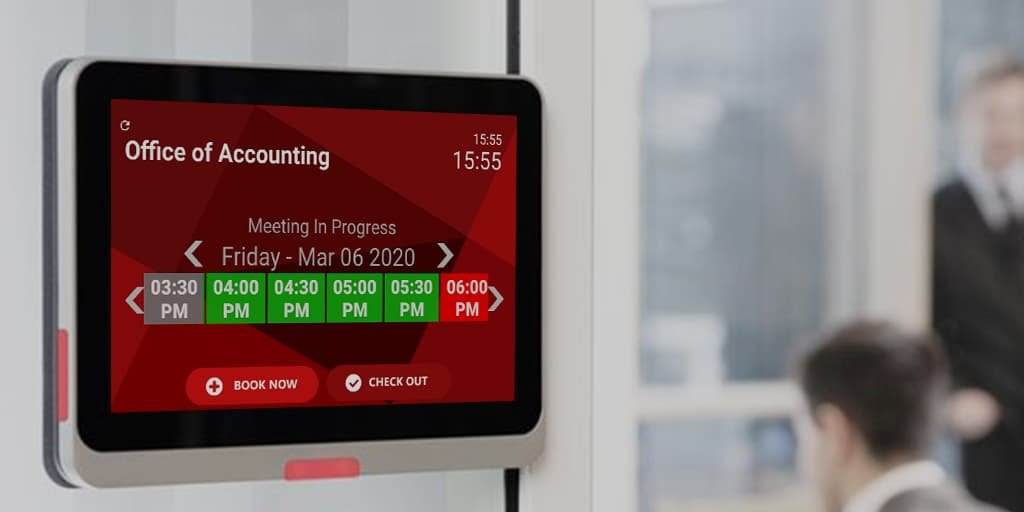The conference room is an important center in every organization, whether for cooperation, project planning, or negotiations. Meetings between coworkers, clients, and partners will continue to be an important element of how firms function. However, many issues might develop when sharing these places and getting the most out of them.
We have some excellent suggestions to help you optimize your conference Room booking system so that everyone in your organization has the space they require when they require it.
All meeting rooms should have the same amenities.
While it’s natural to have preferences, you should avoid making certain areas of your office more appealing than others. It’s a sign that facilities are being allocated unequally, and your employees are probably feeling underserved in terms of infrastructure. That’s why it’s critical to keep technology in each conference room uniform and well-maintained –– rather than having to adjust to diverse technologies throughout your site, employees should be able to enter and plug-in using a common approach.
Make use of digital signage and name your meeting rooms for simple identification.
Give each of your conference rooms a distinct name so that staff and visitors will know where to go when they arrive for a meeting. Installing digital signage outside each conference room can help inform people about the event taking place inside and provide contact information for the organizer. If the room seems to be booked but is empty––for example, owing to a canceled meeting––colleagues will have a direct contact channel. Will allow others to determine whether it is OK to take over the space as the original bookers will not be present.
Make a policy for renting conference rooms and incorporate it in your onboarding process.
These collaborative spaces are booked for meetings are essential. To avoid any misunderstandings, explain your booking procedure to new staff to ensure that best practices for reserving conference rooms are followed.
Use occupancy sensors to make your area more efficient.
Organizations face issues with conference room management due to a lack of understanding of their meeting space requirements and the existing usability of their spaces.
A room occupancy sensor can assist you in answering concerns such as:
Does my company have sufficient meeting space?
When are the most likely times for meetings to take place?
Are the amenities in your conference room enough for the needs of the people who will be using it?
Is it true that some meeting spaces are more popular than others?
Understanding utilization can assist you in developing the best for your company’s needs. Footfall, congestion, dwell periods, and under-utilization are all factors to consider. You may take a more proactive approach to optimize these places after having the appropriate data to answer these concerns.
Your findings may imply that you need to rethink your overall real estate needs, or you may discover a health and safety problem resulting from overpopulation. Rooms that are utilized often and continually may not provide enough of a gap for your cleaning crew to complete basic hygiene maintenance. Your occupancy sensor will be critical not just in identifying these but also in helping to solve them. To find out, go to ‘Tip 6’.
Use occupancy sensors in conjunction with your centralized conference room booking software.
Your occupancy sensors will be able to integrate with your smart building’s operating systems, including your conference room booking software, not only to help you understand what’s affecting your conference room user experience but also to help you understand what’s affecting your conference room user experience.
Individuals will check if a space is being utilized in real-time, eliminating “ghost” reservations if someone fails to show up for their scheduled period. These IoT sensors, placed at the room entry, can automatically update your booking software, ensuring that the data shown is always up to date and that colleagues can instantly book their preferred room when it becomes available.
Utilize your occupancy sensors in conjunction with a cleaning plan.
We focused on this briefly previously, but it merits its part in this article because health and safety issues will continue to be at the top of everyone’s priority lists for the foreseeable future. Meetings can have a significant number of people in them. If the space is going to be used numerous times during the day, it’s critical to have a very effective sanitization system in place.
The Irisys True Occupancy solution uses sensors to measure people’s movement and occupancy levels in your building in an anonymous manner. Can integrate Real-time utilization data with your conference room booking system or other software to alert your cleaning crew when a room has been vacated and is ready for sanitization. You’ll save time and money by cleaning just when the room has been used; second, your cleaning crew will be able to work more efficiently throughout the day by concentrating on areas that require their services.
The installation of occupancy sensors might help improve your conference room booking management, which is only one component of your building’s entire operating strategy. Request a demo with one of our specialists, or download our free guide to learn more about occupancy sensors and how they can improve the operation of your organization’s facility.

